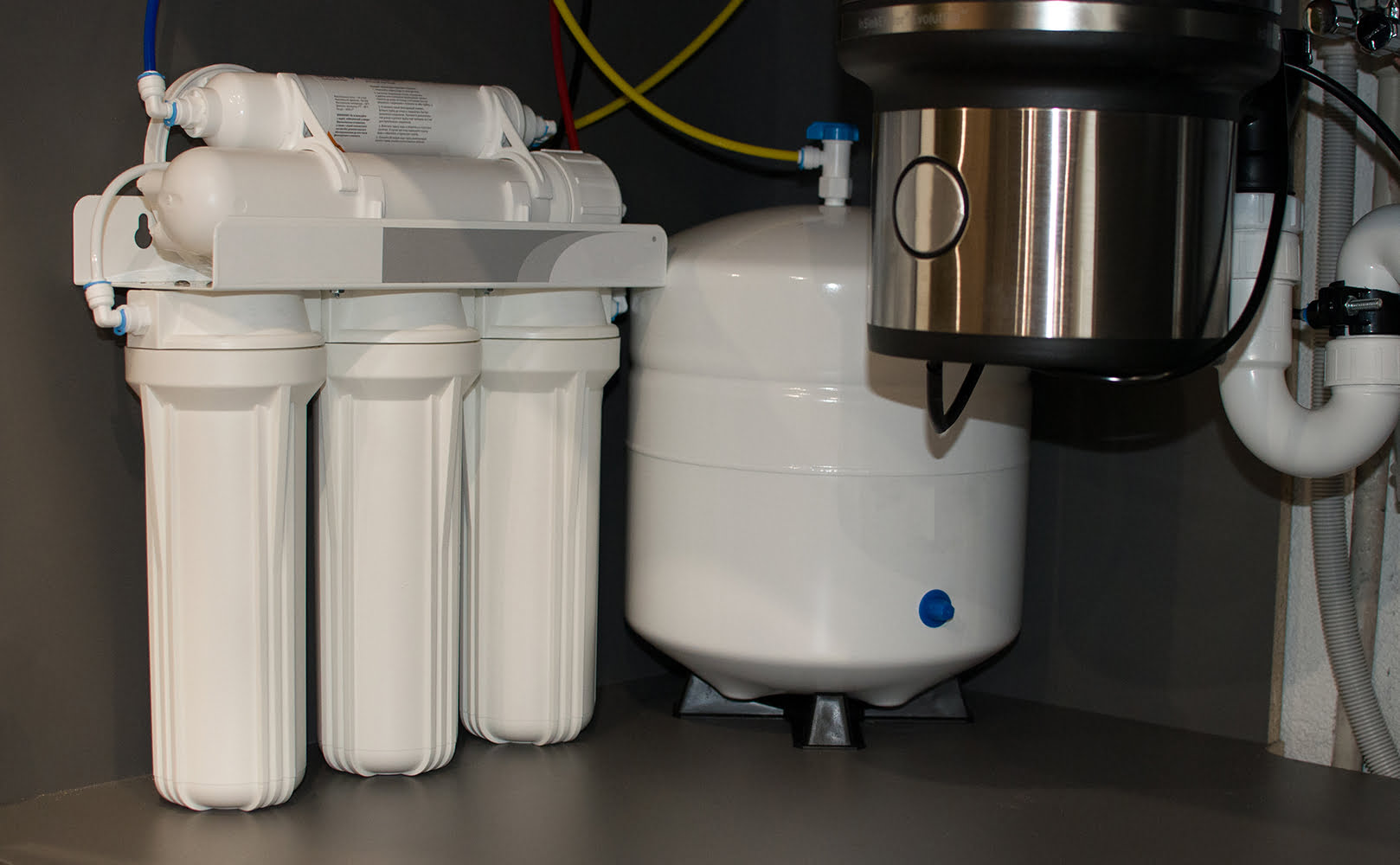How Much Water Pressure Does a Reverse Osmosis System Require?
Written by: Gene Fitzgerald // Last Updated: May 9, 2023
This page may contain affiliate links. If you buy a product or service through such a link we earn a commission at no extra cost to you. Learn more.
Reverse osmosis is a very effective water filtration method, but it does need certain conditions for it to thrive.
One of those conditions is sufficient water pressure.
The water pressure required by a reverse osmosis system depends on several factors. Let’s discuss all of them!
Key Takeaways
- Reverse osmosis systems require different pressure levels depending on their purpose and what kind of water they filter.
- Most in-home systems function optimally at 60 and up to 80 psi, with 40 psi as an absolute minimum.
- Industrial applications usually need a psi of between 100 and 800, depending on the levels of total dissolved solids in the feed water.
How Much Water Pressure Does a Reverse Osmosis System Require?
So, how much pressure does reverse osmosis require?
For a reverse osmosis system for home use, a working pressure of 60 psi is optimal. Depending on the system, that number could reach 80 psi. 40 psi would be the bare minimum pressure, as anything lower means there won’t be enough pressure to push the water through the RO membrane effectively, creating an ineffective system with a high level of wastewater.
If your water pressure measures below 40 psi, then you will need to increase it with a pressure booster pump, which we will discuss further on.
Pressure Needed for Industrial Reverse Osmosis Applications
Using reverse osmosis for industrial applications requires significantly higher pressure than home use.
Industrial reverse osmosis systems are used for varying types of water with different levels of total dissolved solids. Hence, it’s essential to understand the needs of your particular application. In general, the water pressure range needed sits somewhere between 100 and 800 psi.
Required Pressure Based on Feed Water TDS
For a reverse osmosis system to effectively filter water, the feed water pressure needs to be strong enough to overcome the water’s own osmotic pressure. How to figure that pressure level out will depend on what kinds of ions are present in the water and in what concentrations.
Generally, every 100 ppm of total dissolved solids contributes 1 psi of osmotic pressure. For example, feed water with a TDS of 700 would require about 7 psi to overcome the osmotic pressure and push the water through the membrane. The higher the net pressure, the more water can be pushed through the membrane, and the better the filtration results:
Net available pressure = Applied Pressure – Osmotic Pressure.
Besides, if you are using a pressurized bladder tank to store the purified water, which most home RO systems do, the pressure inside the tank must also be subtracted from the applied pressure, so:
Net available pressure = Applied Pressure – Osmotic Pressure – Tank Pressure.
Why Is Feed Water Pressure Important for Reverse Osmosis?
Feed water pressure is essential for reverse osmosis to do its job, and low pressure can cause inefficient membrane performance and less-than-optimal filtration results.
If the water pressure is too low, it may not be enough to push it through the membrane, reducing clean water production and increasing the likelihood of premature membrane fouling.
How to Measure Reverse Osmosis Pressure Accurately
To accurately measure the pressure of the water moving through your reverse osmosis membrane, you would need to fit a pressure gauge close to the RO membrane’s entry side. This will provide you with a precise indication of how much pressure is being applied to the membrane itself.
How to Increase RO System Pressure
Installing an RO-specific electric booster pump is one way to increase the pressure of water moving through your RO system. Another alternative would be to improve the overall pressure of your home’s plumbing. This can be done by adjusting the pressure regulator.
If you have any questions about the pressure needed for reverse osmosis please don’t hesitate to leave a comment below!
Information provided on BOS is for educational purposes only. The products and services we review may not be right for your individual circumstances.
We adhere to strict editorial guidelines. Rest assured, the opinions expressed have not been provided, reviewed, or otherwise endorsed by our partners – they are unbiased, independent, and the author’s alone. We fact-check all content for accuracy. It is accurate as of the date posted and to the best of our knowledge.


